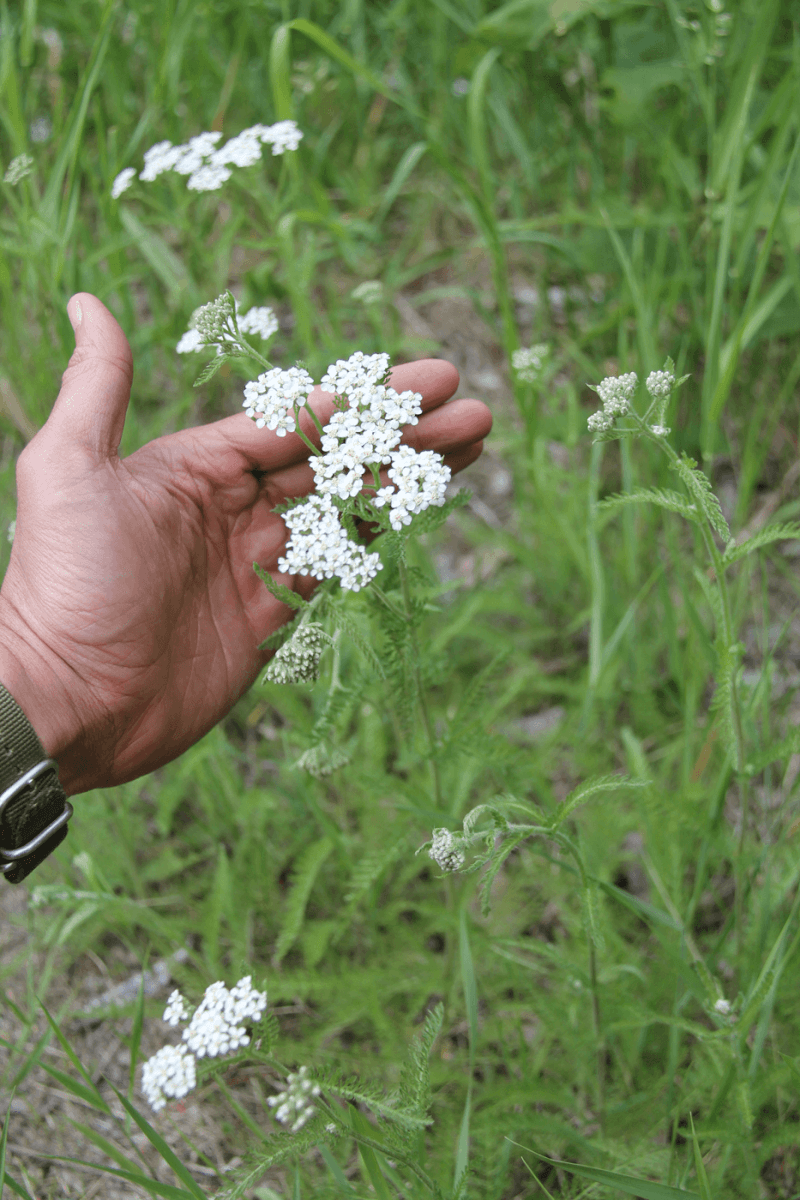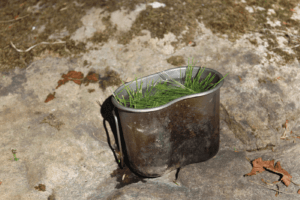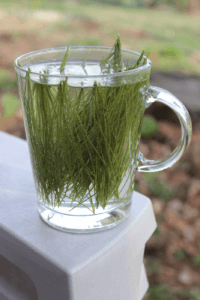Human beings learn in different ways. Some people learn by seeing or hearing; some learn by doing, while others learn by teaching —and these are just some broad categories.
How, then, do you best teach others or acquire plant knowledge for yourself? Considering some of the best plant experts know literally hundreds, if not thousands of plants, how can we tackle this daunting number to learn what we can eat and use for medicine? Answers to these pressing questions are delivered most clearly through experience. Deliberately experience plants and learn from the process of collecting, processing and consuming them. As always, if you can, seek out a professional to help you learn with a much larger margin of safety.

This article should serve as a starting point for adding plant knowledge to the larger skill set known as “field craft.” Because many plant identification guides describe various ways of using plants, I want to break down these methods and provide “how-to” explanations and let you know which plants you can safely experiment with to learn these processes. Because scent is one of the senses most strongly tied to memory, I want you to link these experiences with visual recollection of what these plants look like. Add to that supplemental information from printed guides and living/breathing plant experts, and you’ll begin to see not all plants look green. Your understanding of the outdoors and what it provides will soon give you a survivor’s edge.
TAPPING
If breakfast is your favorite meal of the day, you are probably aware of maple syrup. It is the byproduct of tapping sugar maple trees for sap. All varieties of maple trees can be tapped for their sugary water content. This sap is boiled down in a ratio of 40 to 1 (for every 40 gallons of sap, you can expect approximately 1 gallon of syrup). The survivor is not going to waste fuel or valuable fluids to make a luxury item such as syrup. However, tapping trees for sap is a skill that comes in handy when the nights are cold and the days are warm (when the sap tends to run best).
Other than maple, all the birches and beech trees can be tapped for sap. Walnut—yes, walnut—can be tapped, too, but the sugar content is very low and is nowhere near as sweet as the more common syrup sources. By the way, if you can only identify these trees when they have leaves, mark them with surveyor’s tape and a permanent marker so you can return to them when the leaves fall and you can spend more time picking up on the nuances of the bark. Tapping trees requires no special equipment, and improvised drips can be constructed with nothing more than a knife, a twig and a collection device. A hole is pierced into a tree (ideally, a tree 10 inches in diameter or more) to the inner bark. A stick is inserted into this hole and angled down to the collection device.
Sap collection provides hydration and some sugars. It is one of the easier skills learned, and the fluid is safe to drink immediately.
TRAIL NIBBLES

Another form of foraging that provides instant gratification is searching for what are known as “trail nibbles.” These are plants you can eat immediately—well, almost immediately, once you inspect them for bugs or bird droppings. The modern forager learns to eat on the go, rather than sitting down and consuming a whole meal of berries or nuts. One of the easiest trail nibbles to identify is segmented berries (blackberry, mulberry, raspberry, cloudberry, salmonberry). Remember: All segmented berries are edible, as are those with crowns, such as blueberry, bearberry and hawthorn berries. This “pick-and-go” type of foraging is so simple, a child could do it. In fact, many kids do it without any prompting.
A note of caution: I’ve heard ridiculous sayings, such as “some black berries are edible, and all red berries are edible,” and other useless comments. Color is not a solitary safe way of identifying what you can and cannot eat. If you follow the wrong advice, you’ll consume the wrong berry. Holly and American yew (actually, the seeds, if swallowed) are very dangerous, but wintergreen berries and partridge berries are harmless. All four are edible. Do not use color alone to distinguish what is safe.
Other than berries, there are some great sour trail nibbles, such as wood sorrel and sheep sorrel, as well as some very sweet clovers easily identified and gathered. Learn to identify these “easy” plants by their recognizable leaves and leaf patterns.
TEAS
Pine-needle tea is easily made with green pine needles steeped in hot water. Pound for pound, pine needles have more vitamin C than oranges.
Teas were used by British explorers to improve the taste of their water. When they drank tea, they noticed they didn’t get sick from the local water consumed. Before the science of boiling as a purification method was known, teas were believed to have medicinal and magical powers. Even though we now know tea, alone, didn’t protect the GI tracts of these early explorers, we shouldn’t abandon it. Tea can still improve the taste of water (mint), provide vitamin C (pine needle), cure headaches (willow bark) and relieve fever (yarrow), to name a few benefits.
To experience tea, all one needs to do is know how to boil water. The two most common methods of making tea are steeping and decocting. All you need to steep a tea is a pot to boil water in and a cup to hold your tea. Pine needle tea is very easy to make and, pound for pound, pine has more vitamin C in it than oranges. It can be chopped or broken up to increase the surface area and maximize the vitamins released. The boiling water is poured over the needles and you wait. After only a few minutes, you’ll notice a thin film of oil on the surface of the water. The steeped tea is ready to drink.
Decocting tea requires sustained boiling. A common tea made via this method is sassafras tea. This tea is made by sustaining sassafras root in boiling water until the water darkens. It can be strained of sediment and consumed in moderation, because some studies show that too much ingestion may lead to cancer.
DIGGING

Depending on the time of year, the air temperature may be too harsh for plants to survive above ground. Underground, roots and tubers might be developing before sprouting to the surface. Some edibles are only accessible by digging.
Some of the more easily recognizable dig-able edibles are trout lily (looks like black and blue leaves with an edible bulb), Indian Cucumber (symmetrical whorled pattern of leaves with a horizontal edible root), ramps (leeks), burdock root—with its massive leaves—and cattail, commonly found around swamp areas and known as the “supermarket of the swamp.” In case you’re wondering, there are many wild edibles that have the scent of garlic and/or onions. If it smells like either, it is edible (wild onion, chive, ramps, garlic mustard).
Digging for edibles is very rewarding and allows you to practice your knife work: You can build a digging stick or adze to make your way through the soil. Make sure that if you harvest any wild edibles from questionable water that you cook these edibles to kill any waterborne nasties. Cattail root, which is pure starch and wapato (Indian potato), should be cooked thoroughly. These starches provide excellent sources of carbohydrates and can thicken soups made from easily packed bouillon cubes.
COOKED GREENS AND SALADS
Another way wild edibles are consumed is by cooking greens such as spinach or treating them as salads. This means they can be steamed and/or eaten raw like salad. Live forever, lambs quarter, young plantain, dandelion and wild lettuce are just a few plants that can be consumed in these ways. Depending on the plant, it’s better to eat them younger, because older plants are sometimes tough and have connective fibers that get caught in your teeth like dental floss.

As a general rule, if a plant can be eaten raw, it can also be steamed. Steaming makes tougher leaves more tender. However, in the cooking process ,the tradeoff is a loss of some nutrition. If you don’t have the means to improvise a steamer, these greens can be cooked in a shallow pan with just enough water to prevent them from sticking. It is not uncommon to find small insects on the bottom of leaves, and cooking leaves will kill them. In Tony Nester’s book, Modern Hunter Gatherer, he recommends carrying a small container of balsamic vinegar to make bland salads more palatable. A few drops of something flavorful really improves the experience.
One challenge easily practiced is harvesting a salad from the land. Start off with a store-bought salad mix and add what you can safely identify as a good edible. As your skills improve, use less store-bought mix and more naturally found greens.The goal is to be able to completely “build” your salad from nature’s salad bar. If you can reduce your dependency on store-bought foods in a practical exercise, you should be able to do the same in an emergency.
EXPERIENCE PLANTS
There are other methods for experiencing plants that are more easily done in the kitchen than in the field. Making flour, pickling, deep-frying and candying/jellying plants are other methods not typically done in a survival situation. Nevertheless, they are fantastic skill sets for the survivor. There are even ways of fermenting some wild plants (such as wild grapes and dandelion) to make wines.
Take these suggestions and experience wild foods. You’ll find you are better connected to them, and your plant knowledge will grow faster as you tap into different methods of learning.

CATTAIL is known as the “supermarket of the swamp.” This plant is an incredible resource all year round. From the starchy roots to the green “cat on the cob” to the antiseptic gel found in the summer on the stalk and the fluffy seeds used for insulation and fire starting, you should absolutely become more familiar with it.
WHITE PINE is a plant that provides excellent nutritional value. The pine needles are easily identified and can be collected with little effort. The inner bark of the tree provides sustenance in the middle of winter. Used on its own, the bark has a flavor disagreeable to some. When mixed into a soup with a flavor packet, the bark adds substance and becomes more palatable.
PLANTAIN: The early plantain (both broad and longleaf) can be used in salads. Even after the plant matures and develops stringy inner ribs that make it tougher to eat, the leaves can be chewed, applied to insect stings and used as a poultice under a bandage. The seeds are also pure psyllium, used in laxatives. This common “weed” is found in most front lawns and overlooked daily.
YARROW is easily one of the best plants with antibiotic properties. It is also easy to identify. The only plant that looks like it (for those unfamiliar with identifiable features) is Queen Anne’s Lace. Yarrow can be used as a digestive aide and also to stop bleeding. Used green or dried, it is a plant one should learn to identify for its medicinal properties.
DANDELION: This plant is yet another weed commonly eradicated from front lawns. It is also one of the first plants kids learn to identify. For an adult, this plant takes on more meaning than just as a fun seed pod to blow into the wind. The leaves and flowers can be added to salads as bitters. The roots can be dried and ground as a coffee substitute similar to Postum, and the flower heads can be fermented into wines. This plant is a great resource, because it is extremely plentiful and found across the country.
You’ve probably heard, “Leaves of three, let them be.” This rhyme applies to poison ivy, because this plant has three leaves, along with a very potent skin irritant called uritiol oil. If you avoid all plants with three leaves, you might dismiss important edibles, such as clover. Instead of falling back on a simplistic way of remembering what you should look for, look deeper into the plants that you should avoid.
Poison ivy, oak and sumac all have uritiol oil. These plants are found scattered across the United States in various concentrations in each region. In the Northeast, poison ivy is most prevalent. It can be found throughout most of the country growing as a vine, ground cover or larger shrub. Poison oak is found throughout the West, Southern border states and lower Atlantic. Poison sumac can be found predominantly in the South. Depending where you are, learn to identify this environmental threat by examining the structure, habitat, color and other characteristics.
Common sense dictates not to touch these plants. What is not commonly known of is secondary exposure. Uritiol oil can be spread via clothing, your pet’s fur and water. Worst of all is airborne exposure. Highly allergic persons can break out from being in the proximity to it and, if it is burned in a campfire, poison ivy can irritate the lungs and create a life-threatening condition. A good poison ivy treatment such as Zanfel or the plant, spotted jewelweed, can remove the oil when it is still on your skin.
Go beyond the basic understanding of childhood rhymes, and learn more about the threats in your environment. Learn how they function to better prepare yourself to deal with them.
‹
Editor’s note: A version of this article first appeared in the How To special issue of American Survival Guide.




